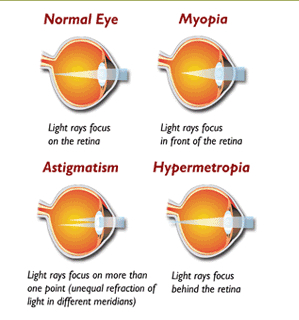Understanding Refractive Errors: An In-Depth Perspective

Vision Oversight
63 % of the world's population needs vision correction. It isn't a stretch to say that the most commonly occurring vision problems are refractive errors in the eye lens. What does a refractive error in the lens entail? Refractive errors occur when the shape of the eye lens prevents light from focusing correctly on the retina.
It's common knowledge that corrective lenses/glasses are prescribed by opticians to remedy this issue. Yet others opt for laser eye surgery to change the shape of their cornea to fix refractive errors, as a more long-term solution.
Common Eye Refractive Errors
There are four types of refractive errors in vision:
Myopia: Near-sightedness, or myopia, is where close objects are clear but distant objects are blurry in one's field of vision. It is an inherited condition, often seen in the childhood stage.
Hypermetropia: Farsightedness, or hypermetropia, where close objects are blurry than distant objects. Mild hyperopia is when distant vision is clear while near vision is blurry. In more advanced hyperopia, vision at all distances appears blurry.
Presbyopia: This eye ailment is a telltale sign of aging. After 40 years, the lens of the eye becomes rigid and loses its focusing ability. Therefore, reading at a close range becomes difficult.
Astigmatism: Astigmatism occurs when the front surface of the eye (the cornea) has an asymmetric curvature. This abnormality results in blurred vision at all distances.

Common Symptoms Of Eye Refractive Errors
Refractive errors can be inherited through family history, so periodic check-ups are imperative if vision problems run in the family.
Some trademark symptoms of refractive issues are blurred vision, difficulty reading or focussing, sore or tired eyes, headaches, squinting, and double vision.
In Plain Sight
A huge barrier to corrected vision is the stigma that surrounds wearing spectacles. With better awareness and understanding of how rectifying these issues works, treating these commonplace issues becomes far more streamlined!